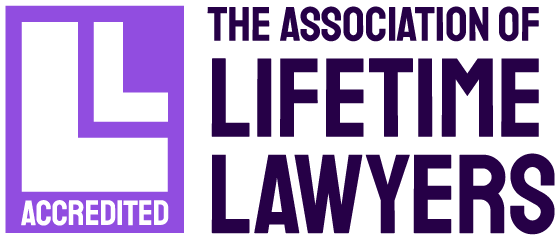The accountancy firm PwC will eliminate all-male interview panels and shortlist for roles in order to provide greater diversity within the organisation. This is as a result of the firm’s 43.8% average gender pay gap.
Gender pay gap reporting: private sector reports show median pay gap of 9.7%
The deadline for large private and voluntary sector employers to publish their gender pay gap (GPG) figures was 4 April 2018.
There were 1,000 employers who reported their GPG figures on the last day whilst approximately 1,500 missed the deadline. The results show that 78% of large employers pay men more than women, with only 8% reporting no pay gap at all. On the basis of the figures submitted, the national median pay gap was reported to be 9.7%, which is significantly lower than the national GPG of 18.4% (recorded by the Office of National Statistics).
Those employers who reported large GPGs include Ryanair (71.8%), Royal Bank of Scotland (36.5%) and Virgin Money (38.4%).
The largest reported GPG of 35.6% was found within the finance sector, whilst the accommodation and food services sectors reported the smallest pay gap, with an average median GPG of 1%, which could potentially be explained by such businesses using flat pay rates, with a large proportion of staff on the minimum wage.
Some companies reported negative pay gaps, where women are paid on average more than men. These included Tesla Motors (-3.8%) and Mamas and Papas (-4.8%).
The EHRC called for employers to tackle their GPG by reviewing their flexible working practices, tackling conscious and unconscious bias, and addressing pregnancy and maternity pay discrimination.
Enforcement of Gender Pay Gap regulations
The Equality and Human Rights Commission (EHRC) has advised that employers who failed to report their gender pay gap (GPG) data will be subject to unlimited fines, convictions and will ultimately be forced to publish their GPG data under a court order in accordance with the EHRC’s enforcement strategy.
Gender Pay Gap Reporting toolkit
The Government Equalities Office (GEO) has published a new toolkit for employers on how to calculate and publish their gender pay gap information.
The toolkit makes further recommendations on how employers can close their respective gaps, calling for employers to:
- Do more to promote the take up of family-related entitlements (such as shared parental leave and paternity leave).
- Advertise all jobs as flexible from “day 1” and ensure that all staff are informed of promotional and development opportunities from the outset.
- Introduce annual equal pay audits.
What to expect in Employment Law in 2018
Sleep-in Duties
The Court of Appeal is expected to hear the case of Focus Care Agency Ltd v Roberts and others in March to interpret whether employees who sleep-in in order to carry out duties, engage in “time work” for the entire duration of the night shift or whether they are only entitled to the national minimum wage when they are awake and carrying out their relevant duties.
Sexual Orientation Discrimination
In Lee v McArthur and Ashers Baking Company Ltd the Supreme Court will determine in May whether a Christian bakery had directly discriminated against a gay man a following their refusal to bake him a cake reading “Support Gay Marriage”.
Gig Economy
In Pimlico Plumbers Ltd v Smith, the issue of employment status will be further examined by the Supreme Court in February.
The Uber case also examines the issue of employment status and the Court of Appeal is expected to hear the case during November of this year.
Holiday Rights
In Sash Window Workshop Ltd and another v King, a further hearing in the Court of Appeal is expected after a European reference confirmed that workers who are wrongly told they have no right to paid holiday can carry their holiday rights over indefinitely, and be paid in lieu on termination, for any untaken holiday over the whole of their employment.
EU General Data Protection Regulation
From 25 May 2018, GDPR will require employers to comply with new rules governing the processing of personal data, including data in relation to consent, transparency and access rights.
It is also the intention of the UK government to introduce a new Data Protection Bill to replace the current Data Protection Act 1998.
Mandatory gender pay gap reporting
The first reports in relation to mandatory gender pay gap reporting for voluntary sector employers and large private employers are due by 4 April 2018.
2018: The year for developments?
Grandparental leave was expected to be introduced in 2018. A consultation to extend Shared Parental Leave and Pay to working grandparents was expected to take place in May 2016, but was delayed due to the EU referendum. There has been no further announcement from the government in relation to whether this policy will advance.
Beyond 2018
The Department for Business, Energy and Industrial Strategy is scheduled to review the Acas early conciliation scheme and the Flexible Working Regulations 2014 in the longer term.
BBC gender pay gap
BBC Director General, Tony Hall, hopes to close the BBC gender pay gap by 2020, following a letter signed by 40 of the BBC’s most high-profile female stars (including the One Show’s Alex Jones, Newsnight presenters Emily Maitlis and Kirsty Wark and broadcaster Claire Balding).
However, Hall was keen to highlight the significant steps undertaken by the BBC in the last four years to improve the gender pay gap. These measures included a corporation-wide aim of achieving gender parity on all presenting and lead roles by 2020, and a 36% increase in the number of women on local radio breakfast shows in the last four years. To accelerate change further, Hall pledged to introduce wider consultation meetings on pay disparity, but remained confident that when the BBC publishes its gender pay gap figures next year, “they will look very different”.
In response to the letter, Sir Phillip Hampton, has said that female staff at the BBC allowed the gender pay gap to happen as “they weren’t doing much about it”. He said that he attributed the gender pay gap partly to a lack of ambition on the part of female staff, suggesting that in his experience, women were less proactive in asking for improved salaries when compared to male colleagues.
Gender pay gap begins just one year after graduation
The Department of Education has published data that suggests women graduates are paid less than male graduates despite studying the same subject in the same year. Women graduating in Veterinary Science were faced with the widest gap, earning 50% less than their male counterparts the year after graduation.
However, the figures did not include earnings data for self-employed workers or mature students. In addition, the figures did not filter graduates by location and failed to factor in wider characteristics such as the socio-economic background of students.
The Department for Education (DfE) has also become the first government department to publish its gender pay gap and bonus pay gap data. According to the figures, the DfE has a 5.3% mean pay gap (the difference between the average salaries for men and women) and a 5.9% median pay gap. The figures are substantially lower than the UK national gender pay gap of 18.1%. The DfE has also reported a mean bonus pay gap of 0.8% and a 0.0% median bonus pay gap.
Employers begin to publish gender pay gap data on government website
Employers have begun to publish their gender pay gap information on the government’s gender pay gap data website.
Click here to access the recent report: https://gender-pay-gap.service.gov.uk/Viewing/search-results
Virgin Money reports 36% mean gender pay gap
Virgin Money has reported an average 36% gender pay gap in their 2016 annual report. According to the report, the financial services organisation had a mean gender pay gap of 36% in 2016 and is expected to achieve gender parity by 2020.
Virgin Money has already launched initiatives to meet this target, including a flexible-working rota to increase job sharing opportunities, more opportunities to enable employees to work remotely and new IT infrastructure that aims to promote flexible working opportunities. Further action to address the gender pay gap includes setting bonus targets for all senior leaders to improve gender balance, extending unconscious bias training and offering a maternity mentoring scheme to all staff.
Gender pay gap reporting
ACAS and the Government Equalities Office have jointly published guidance on the Gender Pay Gap Regulations which are due to come into force on 6 April 2017 for large private and voluntary sector employers.
The Regulations in themselves are quite complex, and the guidance sets out a step-by-step guide to complying with the Regulations. Clarity is provided regarding how employers should handle overseas employees and how pension contributions and bonus payments should be treated for the purposes of the Regulations. The guidance encourages affected employers to go beyond the requirements of the Regulations and implement an action plan that aims to reduce the gender pay gap.
The Regulations do not contain enforcement provisions or sanctions for non-compliance however the guidance states that the Equality and Human Rights Commission has the power to enforce any failure to comply with the Regulations.
If you employ 250 staff or more please take a look at our upcoming workshops that will cover the reporting obligations in detail.
Click here to read more.
Gender pay gap regulations
The final draft of the Gender Pay Gap regulations have been published and will come into force on 6 April 2017. The Regulations clarify who is covered under the legislation, what needs to be reported, when and in what format. The Regulations in themselves are quite complex. If you employ 250 staff or more please take a look at our upcoming workshops that will cover the reporting obligations in detail.
Gender Pay Gap by profession
A new online platform has been launched that enables the public to view the gender pay gap by occupation. The online platform suggests the highest gender pay gaps are within the construction and financial industries. In addition, a new online quiz has been released. The online quiz will allow members of the public to test their knowledge of the gender pay gap by profession.
Employment Law: What to expect in 2017
2017 looks set to be a busy year for employment law. Below we have set out the key developments for the year ahead.
- Brexit, will continue to dominate the employment law landscape. In the New Year, we can expect the Supreme Court’s judgment on whether an Act of Parliament is needed to trigger Article 50 and begin the Brexit process.
- Gender pay gap reporting, one of the key developments of the year, is due in April. Although the first gender pay gap reports for large private and voluntary sector employers will not be due until 4 April 2018, employers will need to capture their first set of gender pay gap data in April 2017. Look out for our workshops covering this topic starting soon.
- The gig economy will continue to be a hot topic both for the Courts and the Government.
- Tribunal fees continue to rumble on with the government’s review of tribunal fees awaiting publication and Unison’s appeal scheduled to be heard in the Supreme Court in March.
- The Trade Union Act 2016 will introduce, among other measures, significant changes to the balloting rules for industrial action. Implementation dates are still awaited, although the 40% ballot threshold for important public services appears to be anticipated for March 2017.
For more information about any of the above or any employment related issue please contact one of the team.
Finance companies promise gender parity in senior roles by 2021
72 financial institutions including HSBC, RBS and Santander, have signed up to the Government’s Women in Finance Charter, which aims to increase the number of women in senior financial roles through the introduction of flexible working schemes and the equal distribution of high-profile work. The companies have pledged to reduce the gender pay gap within the industry by 2021. Of the 72 institutions, 60 have committed to having at least 30% of women in senior roles by 2021, while 13 of the 60 companies have committed to achieve gender parity by the year.







